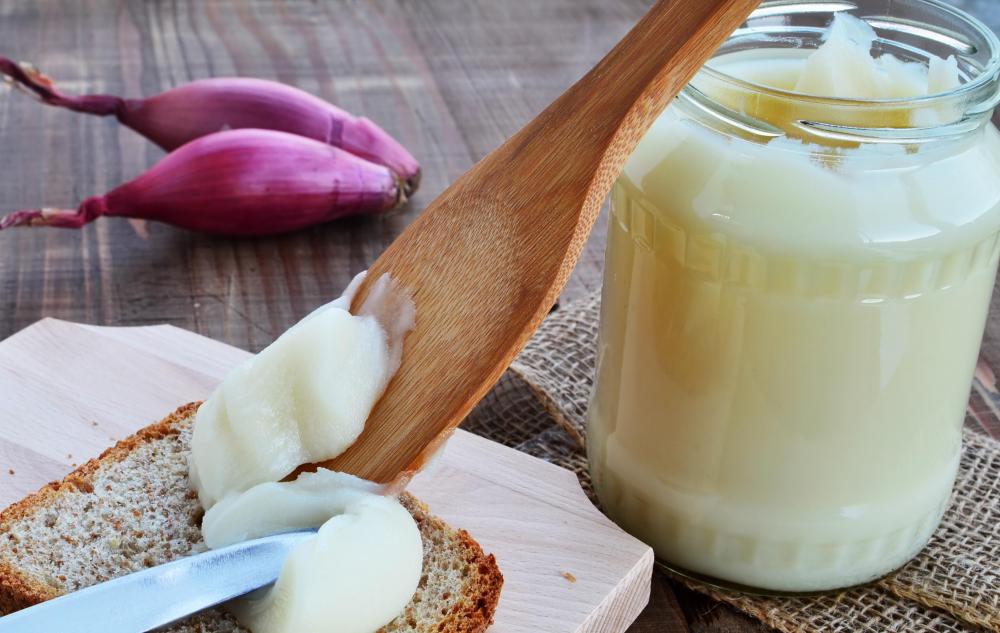At DelightedCooking, we're committed to delivering accurate, trustworthy information. Our expert-authored content is rigorously fact-checked and sourced from credible authorities. Discover how we uphold the highest standards in providing you with reliable knowledge.
What is a Hot Water Crust Pastry?
A hot water crust pastry is a pastry made with the crust from which it gets its name, and it normally is a meat pie such as a pork pie or kidney pie. The crust is traditionally made with hot water, flour, lard and salt. Also known as coffer paste, this crust originally was used as a protective covering for the cooking and storage of meat and game. The crust itself was meant to be discarded before the contents were eaten, but, throughout the years, it has been refined to the point of becoming a favorite, especially for pork pies and game pies.
A popular staple of British cuisine, hot water crust is fairly simple for one to make. Melted fat, usually in the form of lard, is added to boiling water. The flour and salt are then mixed in. It is important for the ingredients to be kneaded together while they are hot. The resulting mixture, while still hot and fairly sticky, can then be shaped.

Unlike other kinds of dough, hot water crust does not have any leavening agents, so it is hand-raised. This means that a hot water crust pastry must be shaped by hand using something as a mold. One popular method uses an empty jar, such as one used for canning.
The jar is turned upside down, and the bottom is lightly dusted with flour. A piece of the crust is then lightly pressed down over the jar so that it takes on the shape of the jar. After it has cooled, the jar can be removed, and the crust will hold the shape. The hot water crust pastry can then be filled and topped with another section of crust.

With these types of pastries, there is rarely a consistent appearance to the finished product. The hot juices of the meat filling will create bulging and sagging as it cooks. For many people, this handmade appearance is part of the appeal of hot water crust pastry.
There are numerous variations of ingredients for fillings and even on the hot water crust itself. Some cooks advocate substituting shortening or butter for the lard. Many people believe that the taste and consistency of the crust suffers, though, and that there really is no way to alter the recipe to make it available to vegetarians or the overly health conscious.
Meat pies created with hot water crust can be stored for as long as several months. Traditionally, they were served cold, but many people prefer them heated. They are very popular as the main course or as appetizers for parties and family gatherings.
AS FEATURED ON:
AS FEATURED ON:













Discussion Comments
I experimented with a hot water crust pastry for a local Renaissance Faire. It turned out OK. The filling for the meat pie was much better than the crust. I found the recipe online at a British site, so I'm pretty sure it was a good recipe. The reviews were all positive. I probably just messed with it too much. It was kind of tough. No one seemed to mind too much, but I minded. I knew it could have been better.
If I try it again, I'm not going to work the dough as much to see if that will help. I may have just over-developed the gluten by too much handling. I've done it before, so that may be what happened here.
I've used a crust made with hot water, but it wasn't for a meat pie. I used one with flour, butter and a little sugar mixed with hot water as a sort of biscuit topping for a skillet cobbler.
I'd heard about the crust for a meat pie, but didn't know it was made with melted lard and hot water. That's interesting, but makes perfect sense when you think about people using what was available to cook with. If they didn't have leavening, they made do with what they had. I have a feeling that's the base of the Cornish pasty, which had the thick crust on one end so the miners could eat it with dirty hands and not eat the crust. Necessity is, after all, the mother of invention.
Post your comments